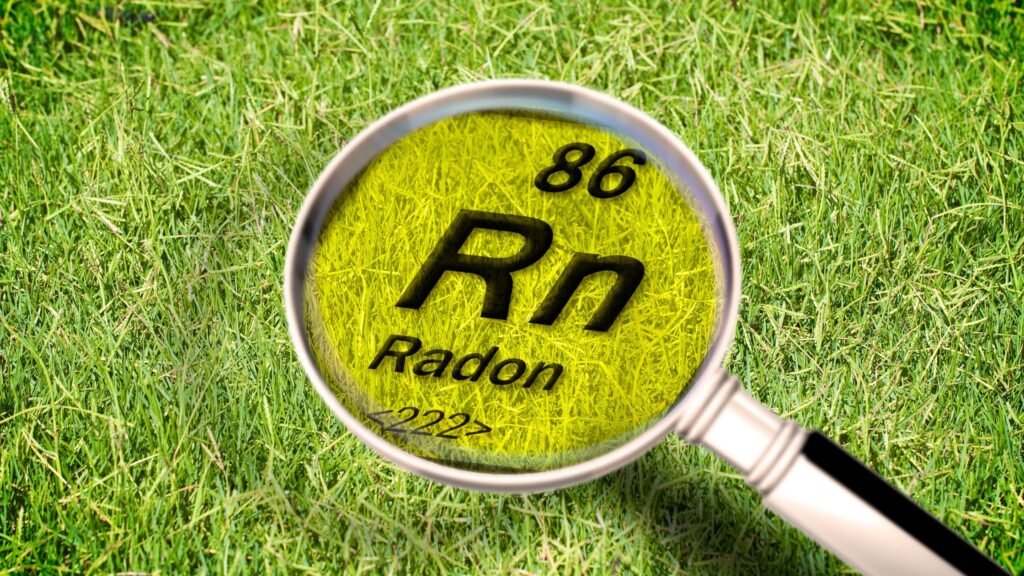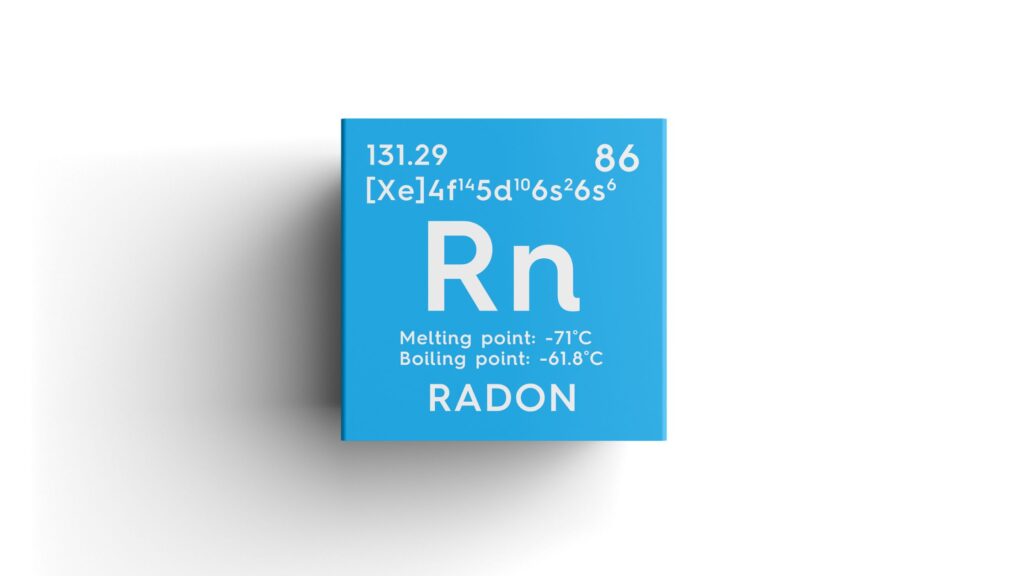Radon is a naturally occurring, radioactive gas that can accumulate indoors to unhealthy levels. Although it originates outdoors, the way a building is designed, built, and operated can draw radon inside and trap it. Because risk varies by site, every home—new or old, large or small—should understand the mechanisms behind radon entry and the practical steps to control it.

What Causes Radon Indoors: Quick Explanation
Radon forms when uranium in soil and rock decays. The gas then moves upward through pores and fractures in the ground. Houses create a slight negative pressure compared to the soil, so the building pulls this soil gas in through openings. Consequently, radon enters, concentrates, and persists unless you test and, if needed, mitigate
Cold seasons, exhaust fans, and tight construction intensify suction, increasing entry rates and indoor concentrations—especially in basements and slabs—when windows stay closed and the stack effect peaks.
The Science Behind Movement and Buildup
Radioactive decay releases radon continuously at low levels. However, buildings amplify entry because of:
A. Pressure differences: Warm indoor air rises and escapes, so lower levels draw air from the soil to replace it during colder months.
B. Mechanical influences: Exhaust fans, clothes dryers, and fireplaces can depressurize interiors and increase soil-gas entry, especially when multiple appliances run simultaneously or for long hours.
C. Weather and seasons: Cold weather typically strengthens the stack effect; closed windows reduce ventilation, so indoor concentrations often rise, and basements see higher readings.
Understanding how pressure differences, mechanical influences, and seasonal changes affect radon entry is key to maintaining a safe indoor environment.
Common Entry Points You Rarely Notice
Even tight buildings have micro-pathways. Typical routes include:
- Hairline cracks in slabs and foundation walls
- Gaps at utility penetrations and conduit sleeves
- Sump pits, perimeter drains, and floor-to-wall joints
- Exposed soil in crawlspaces and beneath porches or additions
Because these paths evolve as homes settle, sealing alone rarely solves the problem. You should treat sealing as a supportive step, not a standalone fix.

Construction, Ventilation, And Occupancy Factors
Radon levels are influenced by factors like foundation type, energy efficiency, daily activities, and water sources. Understanding these helps in better control.
1. Foundation Type
Basements, slabs, and crawlspaces can all pull soil gas, though patterns differ by geometry and soil moisture; footings, drain tile, and sub-slab barriers also influence flow paths and seasonal dilution.
2. Energy Efficiency Measures
Weatherization improves comfort and operating costs; however, reduced air exchange can allow radon to build up unless you also manage sub-slab pressure. Use balanced ventilation and verify with post-mitigation testing.
3. Daily Use
Exhaust appliances and HVAC cycling can increase pressure differentials; therefore, consistent testing under normal living conditions provides the most representative data. Document fan usage patterns and retest after renovations, upgrades.
4. Water As A Secondary Pathway
Homes with private wells can introduce radon through groundwater, which may be released into the air when using hot water. Airborne exposure is the main risk, but if water tests indicate radon, point-of-entry treatment can help. Public water systems typically don’t have this issue.
Foundation type, energy efficiency measures, daily use, and water pathways all influence radon levels. Regular testing and management are essential for maintaining safe indoor air quality.
Why Readings Vary—Even Next Door
Soils change over short distances. Grain size, moisture, and bedrock fractures influence how easily gas travels. Two adjacent homes can show very different results due to foundation details, heating patterns, and the integrity of sub-slab barriers. Therefore, neighborhood averages never replace a test in your specific home.
How Professionals Fix The Problem
Active sub-slab depressurization remains the most reliable approach for most foundations:
- Create a suction point through the slab, or beneath a crawlspace membrane, to access sub-slab soil gas and establish controlled extraction.
- Route durable piping from the suction point to a continuously operating fan, discharging collected soil gases outdoors above the roofline for safety.
- Use the inline fan to lower pressure beneath the slab, so soil gases move into the system rather than entering the living space.
- Install a clear manometer to monitor suction, then confirm reduction with post-mitigation testing, documenting baseline levels and final results for verification.
- Supportive measures—crack sealing, sump covers, drain connections, and, when appropriate, crawlspace vapor barriers—improve efficiency and aesthetics but do not replace ASD.
That’s how suction, ventilation, and monitoring reduce radon levels, while additional measures enhance effectiveness.
When To Act And How To Plan
Radon testing is essential for maintaining a safe indoor environment. Certified tests help assess if mitigation is needed.
- Test first. Use a certified short-term or long-term test. Follow up if results lie near decision thresholds or if conditions change.
- Fix promptly at elevated levels. Industry guidance recommends mitigation at or above 4.0 pCi/L and consideration between 2.0 and 4.0 pCi/L, especially for long-term occupancy or sensitive populations.
- Verify results. Post-mitigation testing confirms success. Periodic re-testing ensures continued protection, particularly after renovations, HVAC changes, or roofing and window upgrades.
Prompt mitigation is key for elevated levels. Post-mitigation and periodic re-testing ensure ongoing safety, especially after renovations.
A Checklist For Radon In Homes
Here is a checklist to consider for radon in homes-
- Maintain a continuous pressure solution rather than relying on temporary ventilation.
- Seal obvious openings as a complementary measure to reduce air leakage.
- Cover and gasket sump pits; integrate the drain system into mitigation where appropriate.
- Document fan operation and monitor the system indicator monthly.
- Schedule retests after major changes or every two years as a best practice.

Conclusion
Ultimately, what causes radon in homes comes down to continuous soil-gas generation, building-induced suction, and discrete entry pathways that let the gas collect indoors. Because these factors exist in every community, proactive testing and, when necessary, professional mitigation provide the most dependable protection. For polished content and brand support on topics like this, produced with clarity and precision, count on DSM Radon.





